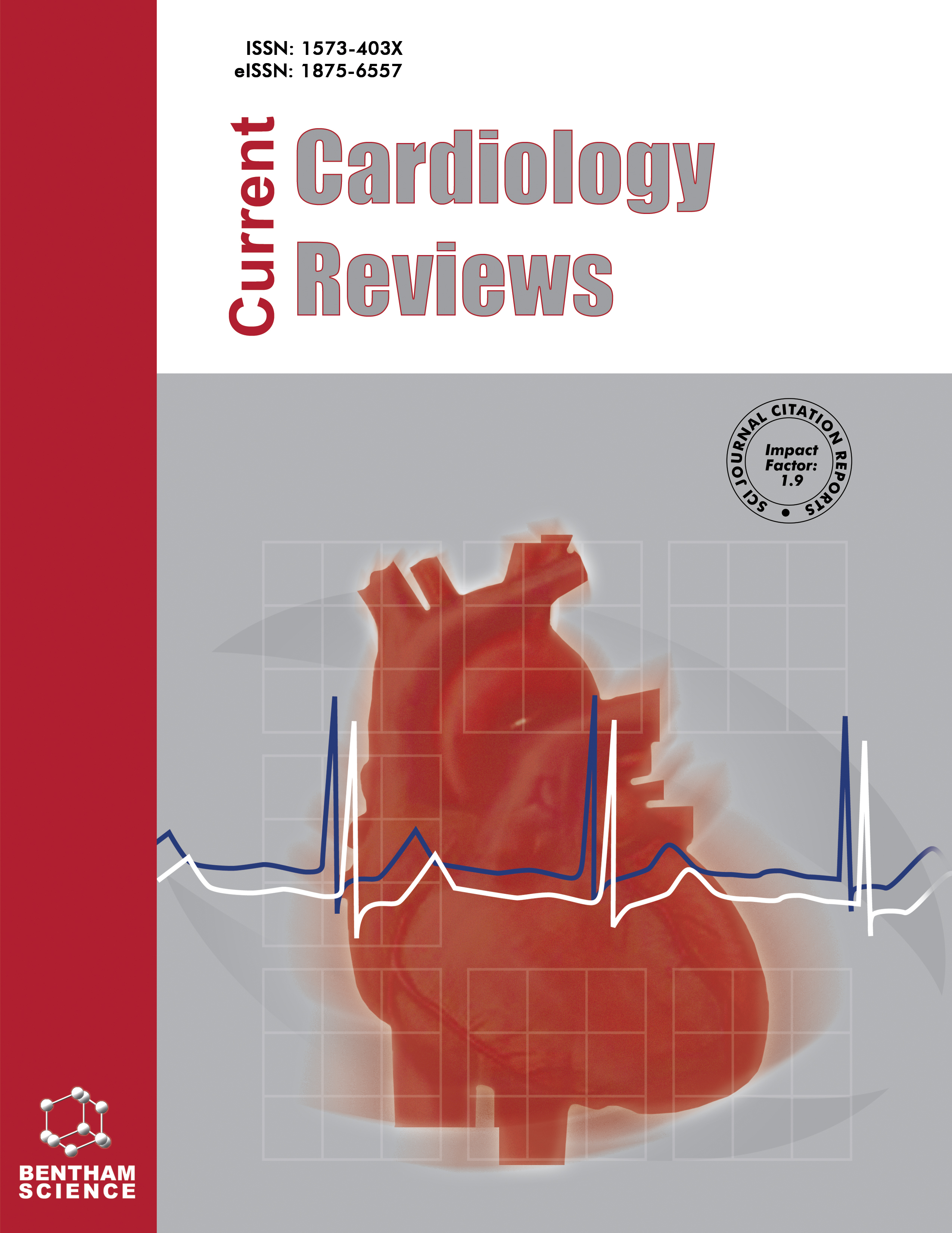- Home
- A-Z Publications
- Current Cardiology Reviews
- Previous Issues
- Volume 10, Issue 2, 2014
Current Cardiology Reviews - Volume 10, Issue 2, 2014
Volume 10, Issue 2, 2014
-
-
The Evidence Base for Revascularisation of Chronic Total Occlusions
More LessAuthors: Alan Bagnall and Ioakim SpyridopoulosWhen patients with ischaemic heart disease are considered for revascularisation the Heart Team’s aim is to choose a therapy that will provide complete relief of angina for an acceptable procedural risk. Complete functional revascularisation of ischaemic myocardium is thus the goal and for this reason the presence of a chronic total occlusion (CTO) - which remain the most technically challenging lesions to revascularise p Read More
-
-
-
CTO Pathophysiology: How Does this Affect Management?
More LessBy John IrvingChronic total occlusion (CTO) pathophysiology has been described in a few, small studies using post mortem histology, and more recently, in vivo intravascular ultrasound (IVUS) to analyse the constituents of occluded segments. Recent improvements in equipment and techniques have revealed new insights into physical characteristics of occluded coronaries, which in turn enable predictable procedural success. The pur Read More
-
-
-
Procedure Planning: Anatomical Determinants of Strategy
More LessAuthors: Colm Hanratty and Simon WalshIn contemporary practice there are three main methods that can be employed when attempting to open a chronic total occlusion (CTO) of a coronary artery; antegrade or retrograde wire escalation, antegrade dissection re-entry and retrograde dissection re-entry. This editorial will attempt to clarify the anatomical features that can be identified to help when deciding which of these strategies to employ initially and h Read More
-
-
-
The Role for Adjunctive Image in Pre-procedural Assessment and Peri-Procedural Management in Chronic Total Occlusion Recanalisation
More LessNon invasive coronary angiography with multislice computed tomography has exquisite sensitivity to detect calcium and even the faintest late contrast filling of the distal vessel. Calcium burden and occlusion length are still valuable markers of duration, complexity and success of the recanalisation procedure. The ability to visualise the vessel also in the occluded segment, especially if calcified, can also help the operat Read More
-
-
-
Advances in Procedural Techniques - Antegrade
More LessAuthors: William Wilson and James C. SprattThere have been many technological advances in antegrade CTO PCI, but perhaps most importantly has been the evolution of the “hybrid’ approach where ideally there exists a seamless interplay of antegrade wiring, antegrade dissection re-entry and retrograde approaches as dictated by procedural factors. Antegrade wire escalation with intimal tracking remains the preferred initial strategy in short CTOs without proxi Read More
-
-
-
Adjunctive Strategies in the Management of Resistant, ‘Undilatable’ Coronary Lesions After Successfully Crossing a CTO with a Guidewire
More LessAuthors: Sara L. Fairley, James C. Spratt, Omar Rana, Suneel Talwar, Colm Hanratty and Simon WalshSuccessful revascularisation of chronic total occlusions (CTOs) remains one of the greatest challenges in the era of contemporary percutaneous coronary intervention (PCI). Such lesions are encountered with increasing frequency in current clinical practice. A predictable increase in the future burden of CTO management can be anticipated given the ageing population, increased rates of renal failure, graft failure and diabetes Read More
-
-
-
Advances in Retrograde Technique for Coronary Chronic Total Occlusions
More LessDespite a short lag period since its development the retrograde approach has been increasingly integrated within the treatment strategies for the percutaneous treatment of coronary chronic total occlusions. This review article discuss which anatomical features argue most powerfully for its use, the specific skills required for its uptake and the technology which has facilitated these developments.
-
-
-
Medical Treatment of Aortic Aneurysms in Marfan Syndrome and other Heritable Conditions
More LessThoracic aortic aneurysms can be triggered by genetic disorders such as Marfan syndrome (MFS) and related aortic diseases as well as by inflammatory disorders such as giant cell arteritis or atherosclerosis. In all these conditions, cardiovascular risk factors, such as systemic arterial hypertension, may contribute to faster rate of aneurysm progression. Optimal medical management to prevent progressive aortic dilata Read More
-
Volumes & issues
-
Volume 21 (2025)
-
Volume 20 (2024)
-
Volume 19 (2023)
-
Volume 18 (2022)
-
Volume 17 (2021)
-
Volume 16 (2020)
-
Volume 15 (2019)
-
Volume 14 (2018)
-
Volume 13 (2017)
-
Volume 12 (2016)
-
Volume 11 (2015)
-
Volume 10 (2014)
-
Volume 9 (2013)
-
Volume 8 (2012)
-
Volume 7 (2011)
-
Volume 6 (2010)
-
Volume 5 (2009)
-
Volume 4 (2008)
-
Volume 3 (2007)
-
Volume 2 (2006)
-
Volume 1 (2005)
Most Read This Month
Article
content/journals/ccr
Journal
10
5
false
en


